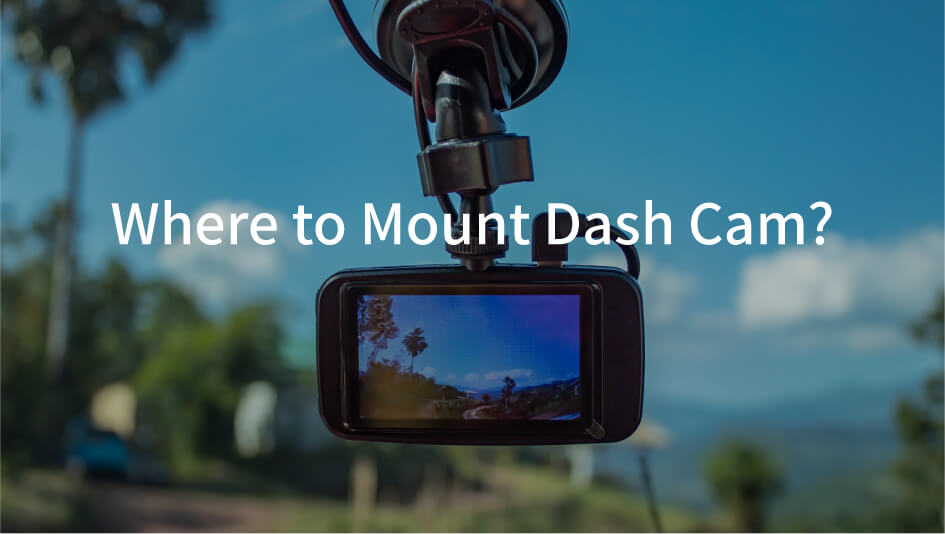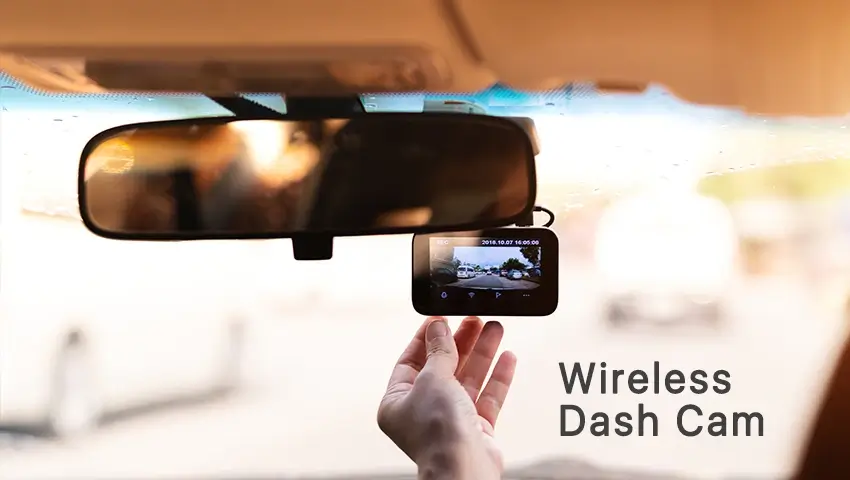If you’ve just picked up a new dash cam, you might be wondering — where’s the best place to put it?
Mounting your dash cam in the right spot isn’t just about good video quality. It’s also about safety, legality, and making sure your camera captures what really matters when it counts.
Let’s break down the best (and worst) places to mount your dash cam and how to do it right.
Contents
What to Consider Before Mounting
Before you stick your dash cam to the windshield, think about a few key factors:
• Local laws: Some regions have rules about where you can place devices on your windshield. Always check local regulations to make sure your dash cam doesn’t block your view.
• Field of view: The goal is to capture as much of the road ahead as possible — including both lanes and the horizon.
• Cable management: Plan how you’ll route the power cable neatly to avoid dangling wires.
• Windshield layout: Watch out for rain sensors, dotted tint areas, and other obstructions that can affect visibility or adhesion.
Best Places to Mount a Dash Cam
Choosing the right spot depends on whether you’re installing a front, rear, or dual-channel system.
Here’s how to get the best angle for each camera.
1. Front Dash Cam – Behind or Below the Rearview Mirror
This is the most recommended position for almost all vehicles.
Mounting behind the rearview mirror keeps the camera centered and discreet, while maintaining a perfect forward view.
Advantages:
• Ideal balance and wide road coverage
• Hidden from the driver’s line of sight
• Easy cable routing through the headliner
• Looks clean and professional from inside and outside
Tip:
If your mirror housing is large, mount the dash cam slightly toward the passenger side for an unobstructed view.
2. Front Dash Cam – Center or Slightly Below Mirror
If you drive a larger vehicle (SUV, truck, van) or your windshield is steep, placing the dash cam slightly below the mirror gives a better downward angle, capturing more of your hood and nearby traffic.
Advantages:
• Better visibility for tall windshields
• Easier access to camera buttons or screen
• Ideal for cameras with built-in screens or GPS modules
Note:
Make sure wiper blades cover the camera’s view area for clear footage in rain.
3. Front Dash Cam – Top-Middle of the Windshield
A sleek, minimal spot that reduces glare and sunlight exposure.
Mounting the dash cam near the top-center of the windshield works best for compact cameras or adhesive mounts rather than suction cups.
Advantages:
• Reduces heat and reflection
• Cleaner appearance
• Easier to hide wiring along the headliner
4. Rear Dash Cam – Top-Center of Rear Windshield
If your dash cam system includes a rear camera, mount it at the top-center of the rear windshield for balanced coverage.
It should have an unobstructed view of the road behind, with minimal interference from tint lines or wipers.
For sedans:
Mount near the defroster lines but not directly over them to avoid distortion.
For SUVs and hatchbacks:
Install the camera just above the wiper’s sweep area to keep the lens clear in wet weather.
For pickup trucks:
If your rear window is small, you can mount the camera externally on the tailgate (use a weatherproof casing) to ensure a full view of trailing vehicles.
Advantages:
• Covers the entire rear view and blind spots
• Complements the front dash cam for full recording protection
• Discreet and easy to power via cable extension or interior trim
Where Not to Mount Your Dash Cam
Avoid these common mistakes — they can lead to blurry footage, shaky video, or even safety violations.
On the Dashboard
Dashboards absorb heat and vibration. Cameras mounted here often overheat, shake, or reflect sunlight off the glass, making footage hard to see.
On Tinted or Dotted Areas
Tint or dotted frit bands can distort the video and weaken the adhesive pad. Always choose a smooth, clear glass surface.
In the Driver’s Line of Sight
Any device blocking your direct road view is unsafe and may violate local traffic laws. Always position the dash cam above or beside your natural line of sight.
Near Sensors or Airbags
Avoid placing the camera near safety sensors or airbags. In an emergency, this could interfere with deployment or damage the device.
Installation Tips for the Best Results
To make sure your dash cam performs flawlessly, follow these pro installation tips from ZOSI:
1. Clean the Glass Thoroughly
Wipe the mounting area with alcohol or glass cleaner before applying adhesive. This ensures strong, long-lasting attachment.
2. Test Before You Stick
Connect the camera, view the live feed, and adjust the angle before finalizing placement. You should see a clear view of both road lanes and the horizon line.
3. Manage Cables Neatly
Use clips or trim channels to secure cables. Route them along the top edge of the windshield, down the A-pillar, and toward your power source.
4. Check for Glare and Reflections
Glare can ruin footage, especially during sunrise or sunset. A CPL (circular polarizing lens) filter can help reduce windshield reflections.
5. Secure the Mount
For suction mounts, ensure the surface is clean and slightly moist for maximum hold. Adhesive mounts are more permanent but provide better stability for long-term use.
6. Nighttime and Low-Light Testing
After installation, test footage at night. If headlights appear too bright or license plates are hard to read, slightly tilt the camera upward to balance exposure.
FAQs
1. How high should I mount my dash cam?
Ideally near the top of the windshield, centered horizontally. This ensures a balanced view of both the road and the horizon without distractions.
2. Should the dash cam face slightly down?
Yes. A slightly downward angle helps capture more of the road and less of the sky, ensuring better footage of license plates and traffic activity.
3. Do I need both front and rear dash cams?
While a front dash cam covers most incidents, adding a rear camera offers all-around protection—especially helpful in parking lots and rear-end collisions.
Conclusion
Mounting your dash cam correctly ensures it captures every important detail when it matters most.
Choose a location that’s legal, centered, and unobstructed, and you’ll get crisp, reliable footage every time you hit the road.
If you like this article and find it helpful, share it with your friends!
Where did you mount your dash cam? Got a clever setup tip? Share your experience with us in the comments

